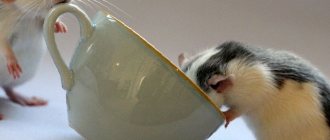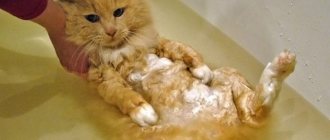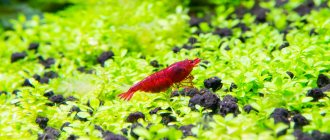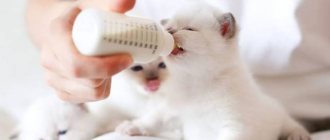Caring for a decorative rat does not have to be too difficult. The beauty of pet rodents is that even children can be entrusted with caring for them. But for this you need to properly organize the rat’s life. Choose the cage and filler wisely, and choose accessories.
And this is more difficult than it seems. Pet store salespeople are no help here. They may not understand rats at all, and their motive is simple - to sell what they have in the store.
As a result, opinions appear on the Internet that supposedly rats stink terribly. That caring for a pair of rats is more difficult than caring for three cats. And the fact that the animals were sitting in an aquarium or a tiny hamster cage remains “behind the scenes.”
Proper care allows you to enjoy interacting with rats without side effects. It is worth noting that there is no single correct solution. You need to choose a filler and the type of cage depending on the habits of the rats themselves and their owners. What is convenient for one may not be suitable for others.
In this article I will talk in detail about the various options for keeping decorative rats. It is better to take care of the housing issue even before the appearance of tailed pets.
Author of the article: Olga Shiltsova, practicing veterinarian, author of the books “Dachshund of Fate” and “Tails of Fortune”
Rat as a pet
Whatever animal you choose as a pet, you should remember the responsibility to the animal: it will have to be looked after, fed and loved, regardless of size, activity and type.
Often, future owners of four-legged animals mistakenly believe that if the animal is large, then there is a lot of trouble with it, and if it is small, then it does not require time. But in reality it's not like that. And often a tiny decorative rat requires more care than a huge guard dog. Therefore, if you are not ready to take on a number of responsibilities for caring for an animal, think about whether you want this responsibility or should you wait.
Behavior and character of pet rats
Differences in character in decorative rats are more pronounced than in other domestic animals. If you have several rats, you will see that each of them has its own “personality”. Therefore, it is impossible to predict in advance what temperament your pet will have. But some general lines of behavior can be identified.
Pet rats become attached to their owner. You will quickly notice that the rodent treats family members differently. The rat will choose a “favorite” and will constantly pester him with games and demand affection.
Decorative rats love care and attention. They don’t mind being stroked or scratched at all and easily become tame. Typically, the older a pet rat is, the more it likes to lounge around and enjoy being stroked.
Rats love games. Especially the young ones. In this respect, they resemble kittens - they are ready to endlessly “fight” with your hands, run after objects, climb up your sleeves and in your bosom.
I'm somehow lost...
Pet rats experience emotions and even express them. For example, they are the only mammals (other than humans) that laugh and smile. Try tickling your rat's belly and watch the reaction.
Rats are smart. Their intelligence is so high that simple latches on cages are not a hindrance for them - they quickly learn to open them. They are easy to train and can be taught simple tricks (we will return to training later).
Decorative rats have a good memory. And they remember not only the good, but also the evil done to them.
Rats usually sleep during the day. But if they have someone to “talk” with, then they change their “daily routine” without any problems.
Rats are rodents. In your home, anything that your pet can chew is at risk. And the pet rat itself is also in danger - the wires are chewed very quickly. Therefore, before walking around the apartment, protect your belongings and your pet.
What else would you like to chew on?
Can a decorative rat live alone?
If you can devote enough time to caring for, communicating and playing with a pet rat, then you can get one. Especially if there are children in the house: they will not give the animal rest without reminders. If a decorative rat has to be left unattended for a long time, then it is better to keep several rodents. They must be the same sex (unless you plan to breed them).
Who to choose: boy or girl
Boys become more attached to their owner and learn more easily. But they have a disadvantage: they mark territory, so females are easier to care for. Although pet rats have less odor than most pets, this may not be acceptable for some.
In general, if you keep and care for your rat properly, there will be no problems with odor.
Breeds of domestic rats
Today there are 137 species of domestic rats, as well as 570 subspecies . And each of them is interesting in its own way. The most common:
- breed of decorative rat - standard,
- tailless rats,
- rexes and double rexes,
- satin types,
- hairless,
- decorative dumbo rats,
- downy
At the same time, the color of decorative rats can be uniform, ticked (with a pattern) or combined. White domestic rats, gray domestic rats, and black decorative rats are often found. Less often - with hearts, spots and stripes.
Taming and training
Usually domestic rats are friendly by nature, but if your pet doesn’t want to come into your arms right away, don’t be upset and be patient – very soon he will become tame.
To start, try giving treats by hand. Once the rodent gets used to your smell and understands that you do not pose a threat, he will begin to eat from your hand without fear. Then start stroking the animal a little while feeding. And only then (if there is no negative reaction from the decorative rat) try to pick it up.
When training, also reward your pet rat with treats. This way you can teach him to respond to a nickname (call him and give him a treat, then try to increase the distance) or to stand on his hind legs (hold the treats higher and say the command).
Never scold or hit a rodent!
Keeping a rat at home
If you have no doubts about your decision to have a rat as a pet, be sure to find out all the features of keeping this type of rodent in your home.
For example, a rat has a very direct relationship with rodents - therefore, walking around the apartment, it will find something to chew on: from shoe laces to equipment wires. In this regard, the animal is either not allowed to go on such walks unattended, or all dangerous or valuable objects are removed in advance.
The second feature of the rat is its smell, which indicates the mark of the territory of residence. Ask yourself, are you ready for fragrant surprises?
Thirdly, rats are afraid of drafts and direct sunlight - you need to remember this when placing your pet’s cage (i.e., a window sill is definitely not a suitable place).
Please note that the comfortable air temperature for a rat is 18-21 °C (despite the fact that the body temperature of a decorative rat is higher than a human one - 38.3-39.3 degrees).
Cell selection
The best home for such a rodent is a large and spacious cage (not a jar, not a container or a box). You can buy it at any pet store - complete with ladders, house, feeder and drinking bowl or separately from them. Some owners make accessories for their pets with their own hands (let us just remember that plywood and cardboard are chewed off quite quickly, and the item will have to be replaced). Of course, the animal will really like and will not get bored with such elements as hanging shelves, a running wheel, swings, and branches that can be climbed. This will be especially appreciated by young individuals, but the “oldies” do not need so much entertainment when decorating the interior of the cage.
When choosing filler for the cage, give preference to large sawdust (small particles of wood species can get into the animal’s eyes, nose or ears and cause an allergic reaction). If you use paper as a bedding, it should be clean, without paint, writing or typography.
Cotton wool is not suitable as a filler!
The cage must be cleaned at least once a week. Be sure to do a complete disinfection to eliminate the risk of infecting your rat with parasites, bacteria and microbes that may appear in a dirty cage.
What should a rat cage look like?
The optimal home for a rat would be a cage made of metal rods with a tray. Rats can climb on the grates, they are well ventilated and allow you to observe what is happening around. The distance between the rods should be about 1.5-1.7 cm (or less). If the bars are too thin (2 cm or more), the baby rats will try to crawl between the bars. At best, the pet will simply run away, and at worst, it will get stuck and suffer.
Excuse me, do you have anything tasty for the poor little rat?
In addition to size, the configuration of the cell is important. A flat (low) cage is not an option. No matter how big it is, the animals will be bored in it. Guinea pigs or hamsters live in fields, and the rat world is more complex and varied. The cage should have several levels.
A real palace for rats
Rats must not be kept in:
- Glass containers (jar, aquarium, terrarium)
- Plastic container/dune
- Small cage for mice or hamsters
It is better if the metal rods are painted. Then they will not oxidize from the caustic urine of animals, and there will be no stains on them.
“I’m sitting behind bars in a damp dungeon.” Painted rods are the best option for rats.
There are two types of cage trays: with and without a false bottom. The false bottom is designed like this: the animals run along the grate, the tray is located below. The mesh should be fine enough so that the rats do not fall through with their paws. But not too much - so that feces fall through.
Advantages of a false bottom:
- Rats are always clean;
- You can use any type of filler;
- The filler is not scattered around the cage;
- Convenient to clean.
Disadvantages of a false bottom:
- An unsuitable grid can cause damage and inflammation of the skin on the paws - pododermatitis;
- Potential possibility of injury (dislocations, fractures);
- Rats are deprived of the opportunity to rummage through the litter;
- If a rat drops a treat from its paws, it is lost forever.
Overall, using a plastic false bottom seems like a great idea to me. It can be partially covered to make the rats more comfortable, additionally put paper towels in the cage for the house and hang hammocks for sleeping.
The shelves are lined with soft fleece fabric: it is soft, dries quickly, and does not tangle your paws
What to feed your pet rat?
It is not enough to know about the care and maintenance of a pet rat: feeding is an equally important aspect, because the pet constantly needs clean and fresh water and food. For liquids, a drinking bowl is placed so that the water does not spill and the cage does not become dirty and damp. The water needs to be changed every day.
The food should include grains (oats, wheat, millet, barley), fruits (apples, bananas, peaches, apricots, persimmons), berries (grapes, strawberries, raspberries), vegetables, herbs (dandelion and plantain leaves), dried fruits , nuts (except almonds) and chicken bones (necessary for grinding teeth). You can give meat, but in small portions and no more than once a week.
The normal feeding frequency is 2 times a day for adults, 3-4 times for children and adolescents.
Additionally, owners purchase a mineral stone that can provide the animal with the necessary amount of calcium.
List of prohibited products:
- roast,
- salty,
- smoked,
- fatty,
- spicy,
- cold,
- sweet.
So candy, chocolate, sausage, bread, soy are not an option. Vegetables such as cabbage, turnips, radishes, radishes, beets, legumes and raw potatoes should not be given. All permitted vegetables and fruits must be ripe (not green, but not overripe). Do not offer your rat leaves from indoor plants or fruit trees.
A properly selected diet is the key to animal health. It’s easy to put together if you know what pet rats eat and what you should absolutely not give.
Selection and arrangement of the cage
For a rodent, it is best to purchase a spacious cage with a monolithic bottom and several levels of platforms so that the pet can move freely between them. A suitable bedding is poured into the “house”: it requires soft absorbent material . Experts advise buying Carefresh litter or using bedding made from recycled newspapers.
By nature, rats have a need to hide (for example, during sleep). For this purpose, you can make a nest for them: small plastic houses are sold in pet stores.
Rats are very clean animals that do not like to pollute the place where they sleep and eat. Therefore, it is better to think about installing a rat litter box.
Cleanliness is the key to health. Daily so-called “spot cleaning” will help maintain order, and weekly cleaning of the cage will strengthen it. During general cleaning, the rat should be placed in a box. Throw away the old bedding and wash all accessories in soapy water. Use a disposable wipe to thoroughly wipe all surfaces of the cage.
Rinse your pet's home with water and dry. After this, you need to pour fresh bedding and return the entire “furnishings” to their places. Do not use strong chemicals for cleaning. They can harm the rat.
Diseases of decorative rats
Rats, like many other decorative rodents, can be overtaken by a variety of diseases, some of which are dangerous for humans. The causes of illnesses can be parasites, bacteria, viruses, fungi.
The following diseases are common:
- ectromelia (also known as smallpox) is a virus that, when it falls into the animal’s body, multiplies on the skin and internal organs (in the chronic form, ulcers, swelling and spots appear on the skin, which ends in tissue necrosis and gangrene; in the acute stage, there may be no symptoms, but the rat will die within 24 hours);
- listeriosis is a bacterial infection that is also dangerous for humans (infection occurs through bedding, food and cage accessories); body temperature rises, coordination is impaired;
- salmonellosis is a bacterium manifested by apathy, diarrhea, intermittent breathing, and without treatment it turns into edema, paralysis and irreversible organ damage (treated with antibiotics - chloramphenicol, biseptol, sulfadimethoxine);
- pneumonia - damage to the respiratory system by pathogens coronavirus and Sendai virus, manifested by discharge from the nose and eyes, sneezing, difficulty breathing, redness of the eyes, swelling of the throat, apathy, weight loss (treated with a course of antibiotics, anti-inflammatory drugs, immunomodulators and vitamins);
- mycoplasmosis - a genital, respiratory or mixed infection, manifested by enlarged lymph nodes, nasal discharge, pneumonia (the genital form may be asymptomatic);
- coccidiosis - a disease of the intestines and liver with frequent digestive disorders, jaundice, exhaustion;
- scab and actinomycosis are a fungus that enters the rat’s body after flea or tick bites, as well as through contaminated food (symptoms are ulcers, grayish blisters, scabs on the skin, hair loss, abscesses on the mucous membranes in the mouth).
Many diseases can be avoided if you wash your hands after handling your pet, give proven food and keep the animal’s cage clean.
Now you know how to care for a rat at home. Following all the recommendations is not very troublesome, but your smart animal will definitely thank you with its attention and love.
Litter for rats: which one is better?
The absence of “aroma” from a cage with rats is an important condition that allows you to calmly enjoy communication with your pets. Rat urine has a strong, unpleasant odor, and feces don't smell like roses either.
To prevent animals from getting dirty in their own excrement and to reduce unpleasant fumes, filler is used. You will have to select it through your own experiments, depending on the characteristics of your pets, cage and personal preferences. The main condition is that it must be safe for rats.
Paper fillers
In my time, rats lived without any fuss - on a thick layer of newspapers. The newspaper was replaced daily, which effectively controlled the odor. Nowadays it is not recommended to use newspapers due to the possible toxicity of the paint.
White paper napkins and towels would make great fillers, but they are too expensive. Rats drag the soft material into the houses and quickly chew it into small pieces. Paper napkins are warm, soft, not dusty. They do not cause allergies, respiratory problems, and do not damage the eyes and paws. They are used to furnish a maternity hospital.
An excellent everyday option is industrial paper (cellulose) filler. It is safe for the health of rodents and they really like it. It can be flushed down the toilet. No cons found. However, experienced owners say that if there are a lot of rats, an unpleasant smell appears quite quickly.
Wood fillers
The most common litter for rats is sawdust. He is also the most harmful.
Disadvantages of sawdust:
- Dusty (cause inflammation of the eyes and respiratory tract);
- Pine sawdust irritates the respiratory tract due to essential oils.
The sawdust on the right (My Beast) is supposedly completely safe. But they are made of coniferous trees! The sawdust on the left (Triol) is deciduous.
Only sawdust from deciduous trees can be used and only if it is out of reach of rats (false bottom in a cage). But with this option, it is more convenient to use granular filler (pellets), which are cheap and effectively absorb moisture and odor. Wood pellets are not placed in the cage.
Only large shavings can be placed directly into the cage, since they do not generate dust.
Rats on a bed of shavings
Some rat breeders also use wood chips. You can buy it in a hypermarket or hardware store under the name “chips for smoking.” For smoking, hardwood trees are always used - alder, oak, cherry, beech. This is important for rats, many of which have a respiratory reaction to coniferous trees.
Corn filler
Fillers made from the core of corn cobs are quite good. Their advantages:
- Eliminates unpleasant odors well and absorbs liquid;
- Never causes respiratory diseases;
- Even if the rats eat the litter, it will not harm them.
The only caveat: if the corn filler is granular, you cannot put it directly into the cage. Hard granules damage rats' paws.
Prohibited litter for rats:
- Hay or straw;
- Flavored fillers;
- Bentonite clay;
- Silica gel;
- Office paper;
- Newspapers magazines.
A little about the physiology of rats:
- Rats are nocturnal animals, but can adapt to their owner's regime
- The average lifespan of rats is 26-40 months (2-3 years)
- The average weight of an adult male is 300-500 g
- The average weight of an adult female is 225-325 g
- Body temperature 37.5-38.5 C
- Pregnancy 21-23 days
- Litter averages 6-12 rats
- Weight of the baby rat at birth is 4-6 g
- Puberty occurs at 6-8 weeks
- Approximate food intake of an adult rat per day is 15-20 g
- Approximate water consumption per adult rat per day is 22-33 ml











